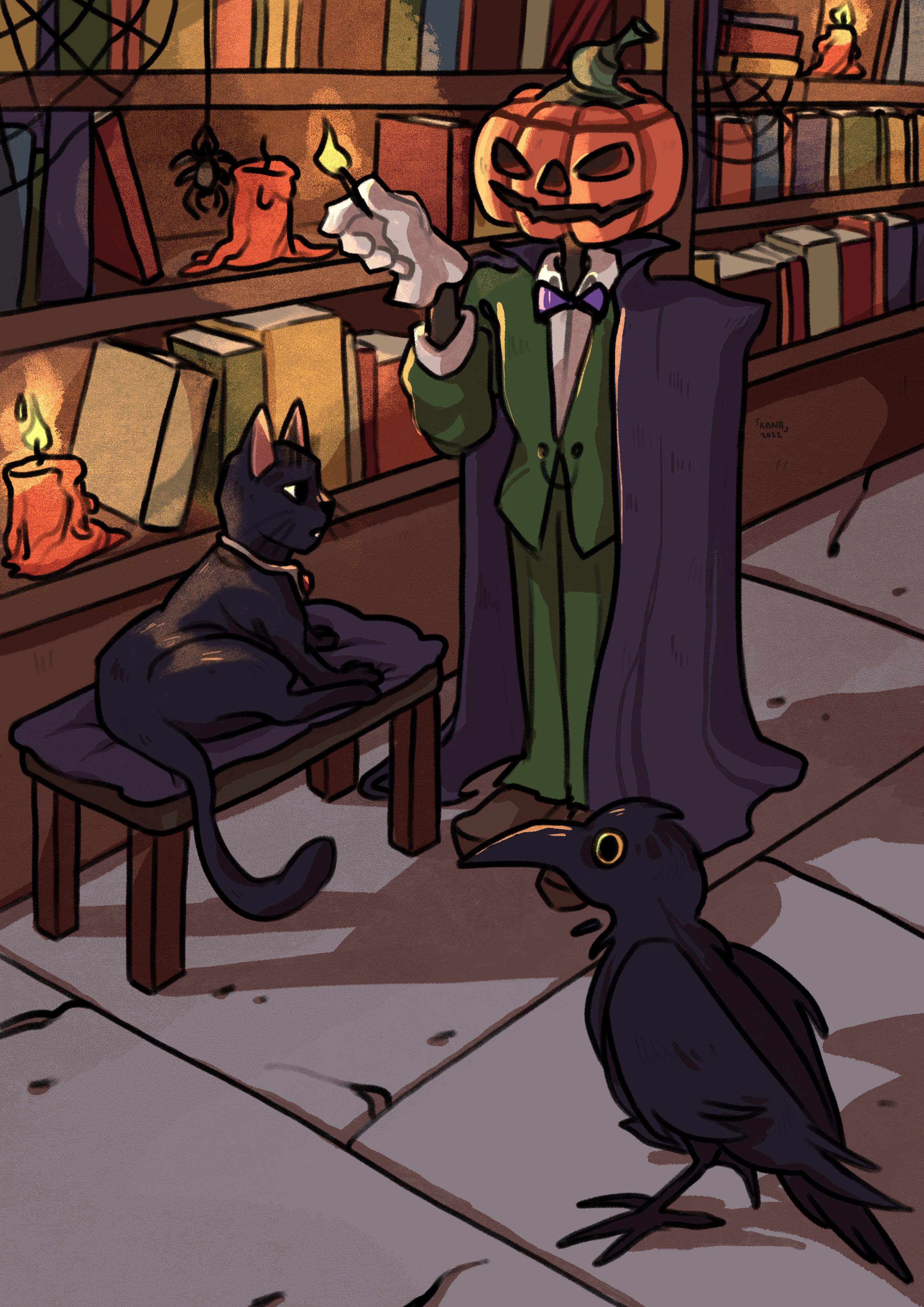




I’m going to have to address the massive, Trussed-up, elephant in the room. Politics is politics, and the economy is currently nothing more than a glint in Larry the Cat’s eyes. Everything seems – well, not great. In this vein, many of Durham’s freshest and finest will be experiencing the delights of trying to sign a house this week, with people they may only have known for less than a month. It’s bad, very bad – but thankfully it fits right in with the ‘Everything is awful’ theme, so at least Durham is still very much in the general zeitgeist of the moment. No one can argue that the University faculty does not have its finger very much on the pulse of the national mood.
In media news, the BBC is celebrating its 100th anniversary. It’s an odd time to celebrate, especially at this time of national self-flagellation. The ubiquitous trifecta of national icons – the Queen, the NHS and the BBC – is now suddenly one weaker. Although, on the NHS, I’m sure you could find some Conservative backbenchers that would prefer people fight in a macabre battle royale contest outside a job centre over a packet of paracetamol. Not to mention, the fact that another former PM’s notable phrase (Harold Macmillan, if it ever comes up in a pub quiz) “Events, dear boy, events” appear to have caught up to us, and the bedlam predicted to arrive over the last six years following the EU referendum has finally turned into reality. Britain appears weaker, more isolated, and more backwards than ever, despite the first British PM of colour being elected. The BBC appears to be one of our country’s last saving graces, institutional issues notwithstanding.
There are worries (or rather, I am worried) that highlighting good news, or noting past accomplishments and future potential, will distract from the otherwise awfulness of the present. And I believe that’s true, in a sense. So, I’m going to follow the BBC’s example, in the interests of balance. In line with the BBC’s prime directive, I hope you’re informed, educated, and entertained by the end of this. One piece of good news, for one of bad. Bad news: Tesco is raising the price of the meal deal. Shocking. Good news: Taylor Swift has a new album
out! So that’s the best piece of news of the year (according to my friend, who I think has a shrine to her in their bedroom). One good: David Tennant’s back as the Doctor. One bad: The Police, Crime, Sentencing and Courts Act 2022 has further limited our rights to protest all the other bits of aforementioned bad news.
When it comes to the BBC, I’m reminded of a quote from Canadian theorist Marshall McLuhan – that ‘the medium is the message.’ I think that holds for the BBC; it presides over a dizzying array of programmes transmitted through a variety of means, from radio to streaming. It’s home to national news, as well as Gardeners’ Question Time (yes, there was a lot of Radio 4 in the car when I was growing up. It was that sort of family). For better or for worse, the BBC is an integral part of British social life and has informed the shift in liberalising social attitudes (for the better, in most cases) over the century since its creation. It’s important to recognise the valuable contribution that it’s made to British cultural exports - 2013 Tumblr wouldn’t be the same without it.
So, in that self-same spirit of national healing, I’m now watching The Thick of It as a kind of pacifier – even New Labour-era satire seems worlds saner than whatever underground fighting ring Jacob ReesMogg is currently presiding over in the Commons lobby. But at least we still have The Thick of It and for that, and for everything else the BBC produces, it warrants at least a small celebration.
Artwork of the week by Annie Park

Samuel Lopes, Miriam Mitchell, Melissa Rumbold, Amy Whittaker, Cameron Beech, James Macfarlane, Ruhee Parelkar, Annie Pickup, Ella AlKhalil Coyle, Lizzie Buckley, Theo Mudhir, Caitlin Ball, Agnes Shu, Lara Moamar, Emilia Williams, Eve Kirman, Millie Adams, Izzy Tighe, Roshni Suresh Babu, Lily Lake, Lydia Doye, Annabelle Bulag, Tom Benns, Alexa Thanni,Charlotte Grimwade and Alice Purves
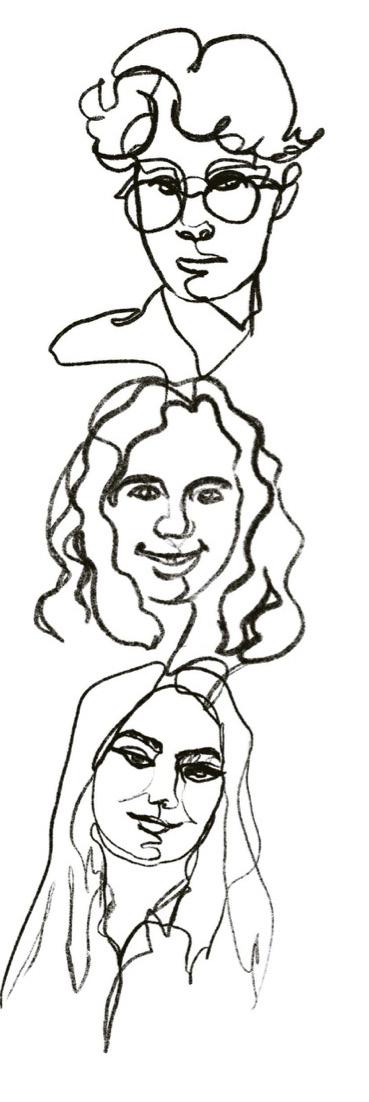
www.palatinate.org.uk
Follow our socials Facebook: www.facebook.com/palindigo Instagram: @indigo.palatinate
Have a question, comment or an article idea? Email us at indigo@palatinate.org.uk or any Indigo section email address
style@palatinate.org.uk
Theonly thing that might be harder to nab than a house in Durham, it seems, is an original costume idea for Halloween. Love it or hate it, it’s a bit of a shame going out and not dressing up even just a bit — but not to worry. From the sexy to the scary, or maybe just funny and cute, these costumes may not be that quirky… but at least it isn’t an angel or devil.
The Vampire: Of course, we had to throw in the classic. Questionable marks on the neck are all part of the costume, or so they say...! Doesn’t go out during the day, miraculously shows up at night (likely at Jimmy’s): screams fresher material. However, sharks might need to change their party destination this year. Rumour has it there have been more than a few fresh spotted on Level 4 of the Billy B, even at night — 2022 is proving to be quite a scary year after all!

From the sexy to the scary, or maybe just funny and cute, these costumes may not be that quirky…but at least it isn’t an angel or devil

The Firefighter: Sound the alarm! Not to worry if someone sets off the smoke alarm during the house party, because you’ll be there. Everyone loves someone in uniform! You, at the very least, won’t be posted on Overheard due to a stranger finding you on the street, because your friends will certainly spot you out of the crowd wearing all this hi-vis.
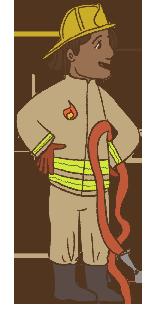
The Durham girl: Frankly, you’re not original going with this look but we can’t blame you for trying! The North Face puffer, the flares, some sort of Shein crop top, and Nike Air Forces (slightly tattered from Jimmy’s, of course) are all you need for this look. Don’t skimp on the name brands, it’s the only thing keeping you authentic.
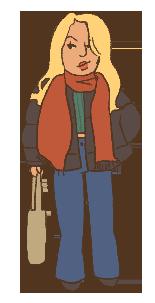
The Mummy: Perhaps this won’t prove so popular if you’re using up all your housemates’ toilet paper, but we’ll forgive you if it’s at least 3-ply and from M&S. At least if you’re in the bathroom with no toilet paper, you wouldn’t be completely stuck for choice! No need to feel insecure with this costume because it will cover, quite literally, your face and body. What counts is on the inside, so your personality will surely shine through!
The Cowgirl: Nothing says trendy Y2K fashion like double denim and Depop cowboy boots, perhaps from a premium thrift shop. It isn’t really a Durham cowgirl if you forget the pink cowboy hat, of course from the beloved costume store in the city centre!
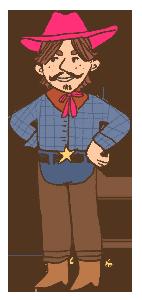
Bonus points if you go to a party and leave with the wrong hat — you didn’t really have a good night otherwise.
Perhaps this won’t prove so popular if you’re using up all your housemates’ toilet paper, but we’ll forgive you if it’s at least 3-ply and from M&S
The Hippo: Your friends will likely call you bizarre, if not slightly jarring, but don’t underestimate the hippo. We’ve saved the best one for last, because not only is the hippo absolutely adorable, but it is the perfect combination of sexy and cute (Ref: Crazy Stupid Love). There is nothing scarier than a hippo, after all! It is one of the deadliest animals on the planet — only after the mosquito, of course. After all, “It is not only their size and weight that makes them dangerous, but also their very sharp teeth!” (that is, indeed, a direct quote fromdiscoverwildlife.com). Horrifying.
stage@palatinate.org.uk
Lookingfor some student theatre to distract yourself from essays? Or need some comedy to cheer yourself up before the inevitable seasonal affective disorder kicks in? Thankfully, DST has you covered for the next term.
Join DUCT in their annual showcase of Durham’s most exciting classical performers. Celebrating the work of playwrights from Euripedes to Marlowe, the actors will each perform a comic and tragic monologue to a panel of professionals - only one can be crowned the 2022 Champion!
Performing 7:30PM 5th November in Brooks Bar, St Cuthbert’s Society Parson’s Field Site.
One director, six actors, two stage managers, and a play that’s falling apart at the seams. Throw in love triangles, sardines, and one too many doors, for a recipe for mayhem on and offstage. Watch the drama unfold in Michael Frayn’s fantastically funny farce-within-a-farce!
Dates for Noises Off are 16th, 17th and 18th of November in Mark Hillery- starting at 8pm

Pitch Productions presents Lobby a new play by Freya Williams. A political dramedy, it begins with an MP being interviewed about allegations of widespread corruption within her party. This interview is quickly derailed when reference is made to a historic scandal, the redacted documents of which are under renewed scrutiny. The contents of the documents are then realised on stage, exposing the relationships and behaviours of the elite clientele of a private members’ club. While student theatre often confronts politicallycharged themes, it rarely examines politics itself. Lobby’s premise is undeniably timely and it’s
guaranteed to be a thought-provoking watch. Thursday 17-Saturday 19 November, 7pm, Assembly Rooms
KEITH is Durham’s newest and truest sketch comedy company, overflowing with eclectic and off-beat funk comedy.They play with the bizarre, dark, absurd, and outright filthy, and stop at nothing to delight, repulse, and entertain their audiences. This November, KEITH presents their unique brand of hilarious sketch comedy, showcasing some of Durham students’ best writers and performers. Strap in for a highoctane evening of dry humour, eccentric wit, and plenty of Hawaiian shirts!
Watch KEITH: Michaelmas Revue on 19th & 20th November, tickets available through the DST website.
Government Inspector, Foot of the Hill Theatre Company Fancy a good ol’ farce? Set in 1800s Russia, Nikolai Gogol’s ‘The Government Inspector’ is a hilarious satire of mistaken identity, deception, and selfdeception. Having received the stamp of approval from the Tsar Nicholas I upon its premiere in Saint Petersburg in 1836, the play explores themes of corrupt political systems through the mediums of slapstick, disguise, and all-round silliness.
Performance dates: 19, 20, 21st November at St Mary’s College Dining Hall

Based on a true story, Kinky Boots is a fabulously camp, charismatic show spotlighting an unlikely partnership to save a struggling family run shoe factory. With drag, divas and dance
breaks; this shows high heeled, high energy celebration of queer culture teaches us about acceptance, because if you can’t live yourself, how in the hell are you gonna love someone else?
Assembly Rooms, 23rd-26th November 7:30 start time with a 2:30 matinee on the Saturday.
A staple of the Michaelmas calendar, Tone Deaf Theatre Company are delighted to return to the Assembly Rooms Theatre for their annual Freshers’ Showcase on Sunday 13th November. With a set list including hits from Mean Girls, Les Misérables and Dear Evan Hansen performed by Durham’s finest freshers, you won’t want to miss this!
TDTC’s Freshers’ Showcase 2022, Sunday 13th November, 7:30pm, Assembly Rooms Theatre
It’s the night before Hogswatch and the Hogfather is nowhere to be found, assassins are behaving very strangely indeed, and the last thing Susan wants is a family reunion. A fantasy tale of unlikely friendships, charming villains, and the importance of fighting for what you believe in.
Assembly Rooms, 7th-10th December, 7:30pm, 5:30pm Saturday
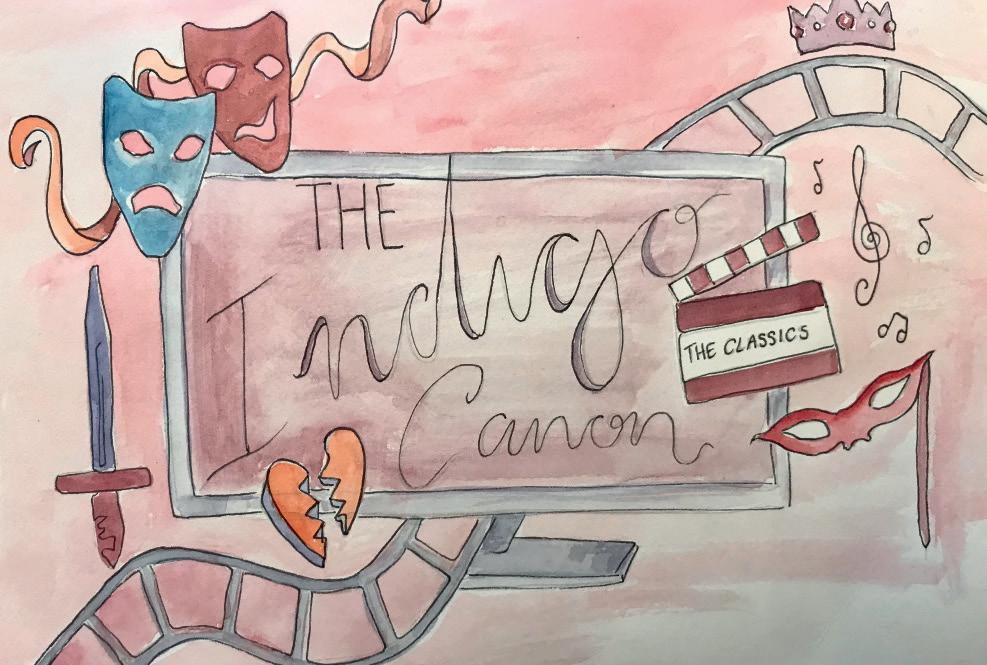
Inrecent years, biographical films depict ing some of the world’s most influential names in the music industry have taken centre stage. The last five years alone have seen the release of several award-winning mu sic biopics including Elvis, Bohemian Rhapsody, and Rocketman, all of which caused a storm amongst music fans and film critics alike. How ever, the release of these films was not without backlash concerning the detailing of the dark er sides of international stardom. The biopics demonstrate the highs and lows of a career in music and the challenges faced by artists when attempting to balance their personal and pro fessional lives under the lens of the public eye.
Bohemian Rhapsody, the 2018 Queen biopic, follows the band’s journey to global fame as they find their sound and attempt to defy typi cal musical stereotypes of the 1970s glam rock era, culminating in the renowned Live Aid per formance of July 1985. The film itself had major influences from the surviving band members and close friends of frontman Freddie Mercury, with Brian May, Roger Taylor, and John Deacon all having a creative input in the film’s produc tion. Rami Malek, who won Best Actor at the Oscars for his depiction of Mercury, worked closely with the band and received approval from Mercury’s sister to portray his battle with his sexuality, faith, and racial stereotypes.
However, despite receiving two Oscars and being nominated for a further three, the film faced harsh comments from critics and Queen fanatics for the film’s unrealistic take on Mer cury’s personal struggles. They claimed that many details that had previously been spoken about in interviews and memoirs of the band had been glossed over or omitted altogether. Critic Sheila O’Malley similarly highlighted her frustration with the representation of the complex creative process behind the produc tion of many global hit songs, suggesting that the film had treated the making of the band’s biggest tracks “in a cursory manner, with very little insight provided.”
All this said, the film still plays an important role in placing a spotlight on significant issues faced by artists today as they face the harsh scrutiny of the media whilst striving towards musical originality. The members of Queen and the Freddie Mercury estate have raked in over
£20 million since the film’s release and con tinue to earn royalties from the band’s music as the essence of Queen has once again been revived and reimagined for a new generation of listeners.
Baz Luhrmann’s Elvis, has received similar criticism concerning the somewhat dark and brutal portrayal of the King of Rock ‘n’ Roll’s personal life after he was propelled into the limelight by his manager Colonel Tom Parker. The film itself was praised for its star-studded cast, with Tom Hanks’ depiction of Parker pair ing perfectly with Austin Butler’s embodiment of Presley’s larger-than-life legacy. The plot follows the young Presley as he becomes an international heartthrob and musical genius, wooing swarming crowds of besotted girls with his trademark ‘wiggling boy’ gyrations, all un der the manipulative hand of Parker. The film has been criticised for its lack of entertain ment value, with many iconic performances of his career only receiving side-glances in place of seemingly drawn-out backstage conversa tions. However, Priscilla – Presley’s former wife – attended the red-carpet premier of the film alongside Butler, noting that the film was “beautifully done” and that Butler did an “out standing” job of portraying the electric pres ence of Presley throughout this career. Despite any criticism the film has faced, it managed to make over $284 million, cementing it as the second highest grossing music biopic in the
Other biopics such as Rocketman, detailing the life of Elton John, involved the artist them selves in the creation of the film, with John standing as the executive producer alongside his husband, David Furnish. John’s hands-on involvement with all aspects of the film, from the script through to the final directing cut has allowed for a clear fusion between musical and historical accuracy, something that obvi ously cannot be attained in biopics written and filmed posthumously. However, with directors working closely with friends and family mem bers of the artists throughout all stages of the production of biopics, it is without a doubt that these films showcase the personal sides of these global sensations that were previously re stricted to the artists’ inner circles.
Biopics achieve their purpose in humanising these musical icons and reflecting on their pri vate lives behind closed doors, away from the trials and tribulations that come with the pres sure of the public eye. Ultimately, music biopics successfully unite the audience with the legacy of the artist through one important common thread: their timeless love for music.
Maia Cuschera considers the extent to which a music biopic can become a classicbox office charts, just behind Bohemian Rhap sody.
HasKanye West reached the point of no return? After a two-year long hia tus, the rapper’s re turn to Twitter was short-lived. On October 9, Kanye posted an antiSemitic tweet that was quickly removed by Twitter as it ‘violated the Twitter Rules’ and his account was locked. It comes after months of controversy.
Following his divorce from Kim Kardashian in March 2022, West has had a number of problematic moments. He has called the Black Lives Matter movement a “scam”, worn a “White Lives Matter” shirt and lost his partnership with Adi das as a result, and has called nu merous celebrities out online. But where did it all begin?

West is no stranger to making headlines for his questionable ac tions. Arguably, West’s downfall began back in 2009 at the VMA’s when he hijacked Taylor Swift’s acceptance speech in a moment of utter humiliation. The event is one of the most prominent of his career and foreshadowed what was to come. You may remember West’s thoughtless “slavery was a choice” comments in 2018, and his huge support for Donald Trump where he was spotted sporting a ‘Make America Great Again’ hat the same year. Yet, the release of his eighth album Ye and King the following year shifted the attention away from his scandal ous actions and towards his shiny new records once again.
It was around this time that West and Kim Kardashian’s marriage hit the rocks. In November 2019, rumours were
circulating that West had become more controlling over his wife and his newfound religious beliefs seemed to cause problems. Months later in July 2020 during his presidential campaign West shared private details of his wife’s
to reunite with him, but 2022 marked West’s true decent.
At the end of January 2022, West dropped his song ‘Eazy’ which included lyrics that seemed to slam the Kardashian-Jenner fam ily’s method of raising children
light of the act, model Gigi Hadid called the rapper a “joke”. It is safe to say West didn’t take the com ment lightly. In an Instagram post, he called Hadid a “privileged Ka ren … born with a silver spoon in [her] mouth” and went on to call those that denounced him “pro grammed sheep” for disapproving.
October 9 saw West’s high-pro file return to Twitter. In a tweet that caused him to be removed from the platform almost imme diately, he wrote “I’m going death con 3 On JEWISH PEOPLE. The funny thing is I actually can’t be Anti Semitic because black peo ple are actually Jew”. Following this, on his YouTube channel, Piers Morgan asked West whether he regretted the tweets, though he said he was “absolutely not” sorry for his antisemitic regards and walked out during the interview. He is now also being sued by the family of George Floyd for claim ing the victim of police brutality was killed by the drug fentanyl. Floyd was murdered by police of ficer Derek Chauvin who knelt on Floyd’s neck for nine minutes and 29 seconds, though West claimed the officer “wasn’t even on his neck like that”.
pair were “worlds apart” until January 2021 when Kim finally confirmed she wanted to divorce her husband, and officially filed for divorce in February 2021. Since then, West and Kardashian have been seen with new partners, but in December 2021, West publicly begged his wife
of, and said he wants them to at tend his Donda Academy instead.
At this year’s Paris Fashion Week in late September, West wore a shirt with the phrase “White Lives Matter” in bold let ters plastered across the back. The slogan is used in conjunction with white supremacist movements. In
Following his bipolar diagnosis in 2018, many people are ques tioning how much longer West should be receiving media atten tion. Whilst some argue that the rapper needs compassion and deep therapy, others, especially those with bipolar disorder, are sick of defending him and many feel that his time in the spotlight should come to an end in order for him to seek help.
: Anna KuptsovaHe said he was “ab solutely not sorry” for his anti-Semetic re gards and walked out during the interview
experimentation, that in many ways caused them to crash and burn after the release of Notes on a Conditional Form. Being Funny suggests a far lighter view of existence, reflected not only in the ecstatic and ‘joyously straightforward’ lyricism, but a matured instrumental backing to Matty Healy’s ever distinct voice.
On this note, we must note that the 1975 are still surely and distinctively the 1975. They retain the self-reflectiveness and artsy pop of the indie, angsty band that rose to fame in 2014, perhaps most evident in the intro, labelled the same as ever, The 1975. With the exception of Notes’ opening of Greta Thunberg’s speech, Being Funny is the first album to change the lyrics of this opening track, and its quotable commentary “we’re experiencing life through the postmodern lens” rings familiar to a fan’s ears.
Maintainingtheir status as an indie pop cult classic, The 1975’s new album, Being Funny in a Foreign Language serves to remind us of their instrumental and lyrical genius that has cemented their place as one of the more popular UK bands of the last decade. Released on the 14th of October, the album positions itself as the shortest of their five, and fans and listeners alike are left crying for more after the eleventh and final track. The end product is both condensed and cohesive, illustrating Matty Healy’s unwavering ability to blend his
However, the general tone of this album is far more upbeat, encompassing experimental use of piano, funky guitar and drums to create an artistic piece that moulds it into a harmonious whole.
This perhaps reflects the shift in the message of the album. Where Healy and the band have previously utilised the album form to solely demonstrate anger or unease, whether at political systems or individuals, Being Funny successfully turns this on its head and boasts a unique vision of human relationships and love. These conventionally popular thematically

The enigmatic and occasionally controversial frontman has produced another creatively inspired song that promotes his view of the absurdity of the human condition and its relationship to modern society. The intro evokes feelings previously explored in songs such as Love it if we Made it, but posits them in a more satirical and abridged tone through the lyrics “you’re making an aesthetic out of not doing well / and mining all the bits of you you think you can sell”. Healy thus maintains the band’s traditions, creating a perfect blend of good music with political inclinations that have coalesced in this album more successfully than it has done so previously.
music with a lens of social criticism on our state of modernity. It crafts a new sound, based on the hits of previous albums, with Looking for Somebody (to Love) echoing the anarchy that displays itself in People, and the slower All I Need to Hear creating a reminiscent ballad sound of the earlier Nana or Be my Mistake
driven songs have finally taken the stage they deserve and are perhaps symptomatic of The 1975’s refining of their sound to take them to the top of the charts. In this way, the album is capable of appealing to die-hard fans as well as casual listeners and perhaps sceptics. They have seemed to shy away from raw and unbridled
The condensation of this album has been a move of genius for The 1975. Gone are the overly artsy experimental and techno tracks of Notes, gone are the attempts to substitute pop music for intellectual discussion. In its place are feel-good, lively tracks such as Happiness, I’m in Love With You and Wintering, capable of putting the band back on top. We were hopeful for a resurgence in the pop-music they thrive in, especially after the 2020 album’s disappointing release, and they have delivered. Healy and the band have stripped back the digitalised sound and overly angsty tone to produce an album certainly worth praising.
The album is capable of appealing to die-hard fans as well as casual listeners and perhaps sceptics
conventionally popular, thematically driven songs have finally take the stage they deserve
food@palatinate.org.uk
colloquially known as ‘Spoons’ was founded in 1979, and has since become a staple favourite of the British public. Its name alone embodies perhaps one of the best underdog stories of all time, famously im mortalising the founders’ schoolteacher who told him that he would never amount to any thing.
experience of Lloyds transforming into a night club. ‘Sudden’ and ‘intense’ are two words that spring to mind when describing this process, with lights strobing, music thumping, and even fights brewing by about quarter to six. All of this is perfect if you’re in the mood for an exciting night, but if you simply yearn for a quiet pint, the Waterhouse is a positive safe haven in comparison.
Unfortunately for Mr Wetherspoon, his pu pil amounted to a whole 861 pubs that operate throughout the UK and Ireland, two of which are based in our very own Durham. We are all familiar with the typical sight of Durham stu dents flocking in their masses to The Bishop’s Mill, although the ‘other’ Wetherspoons of North Road, the Waterhouse, is arguably an even more beloved landmark.
In an objectively tragic turn of events for many Durham residents, students and Wether spoons’ staff, the Waterhouse was put up for sale earlier this month. This friendly establishment
While the price of drinks is one obvious reason why students so heartily appreciate Spoons, the pub’s national menu is also something to admire. Ranging from pub classics to vegetarian deals, Spoons even incorporates special cuisine nights, such as Thurs day night’s Curry Club. In our view, it really does have something for everyoneand at incredibly affordable prices. Some of our personal favourites, as vegetarians, are the halloumi and Quorn nugget wraps, accompa nied by the revered Spoons chips, which have never failed to impress us, neither in quality or quantity.
n fact, last week we felt obliged to visit Spoons and try some delicacies that stray from our usual choices. We sampled the new Quorn nugget basket which was both affordable and tasty, as well as the fish and chips, with over whelming impression of the latter being that
‘it was a like a massive fish finger’- which is not necessarily negative. We also or dered three small plates of nachos, chips and curry sauce, and roasted vegetable pizza, none of which can accurately be described as ‘small’, for the bargain price of £12.95.
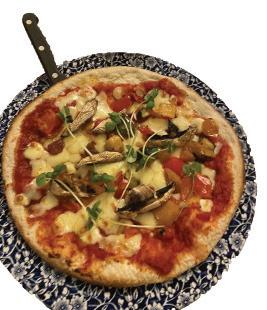
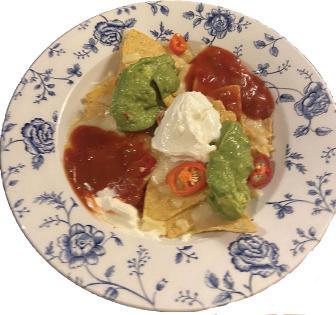
During this visit, the chip quantity was off the scale; we could not even bring ourselves to keep counting, it was frankly exhausting.
We even found room in our stomachs and purses to splash out on dessert, of which there is a wide variety, including ‘mini’ options for those who tend to take it a bit too far on the savoury options.
Additionally, the unlimited amounts of sauc es in Spoons remains a refreshing source of comfort in this money-grabbing world. We love the fact that you can even take home any spare mayo you may have left over.
There is not enough space to detail the many reasons that we love and cherish the Water House Wetherspoons, which welcomes us all with open arms at all times of the day.
We are sure that many people, like us, have been left shocked by this unfortunate decision. We wholeheartedly thank the Water House for its service to Durham and its people, it will not be forgotten.
Gabi Gordon and Ellie Boyden discuss why they’ll miss ‘The Water House’
Its name alone embodies perhaps one of the best underdog stories of all time
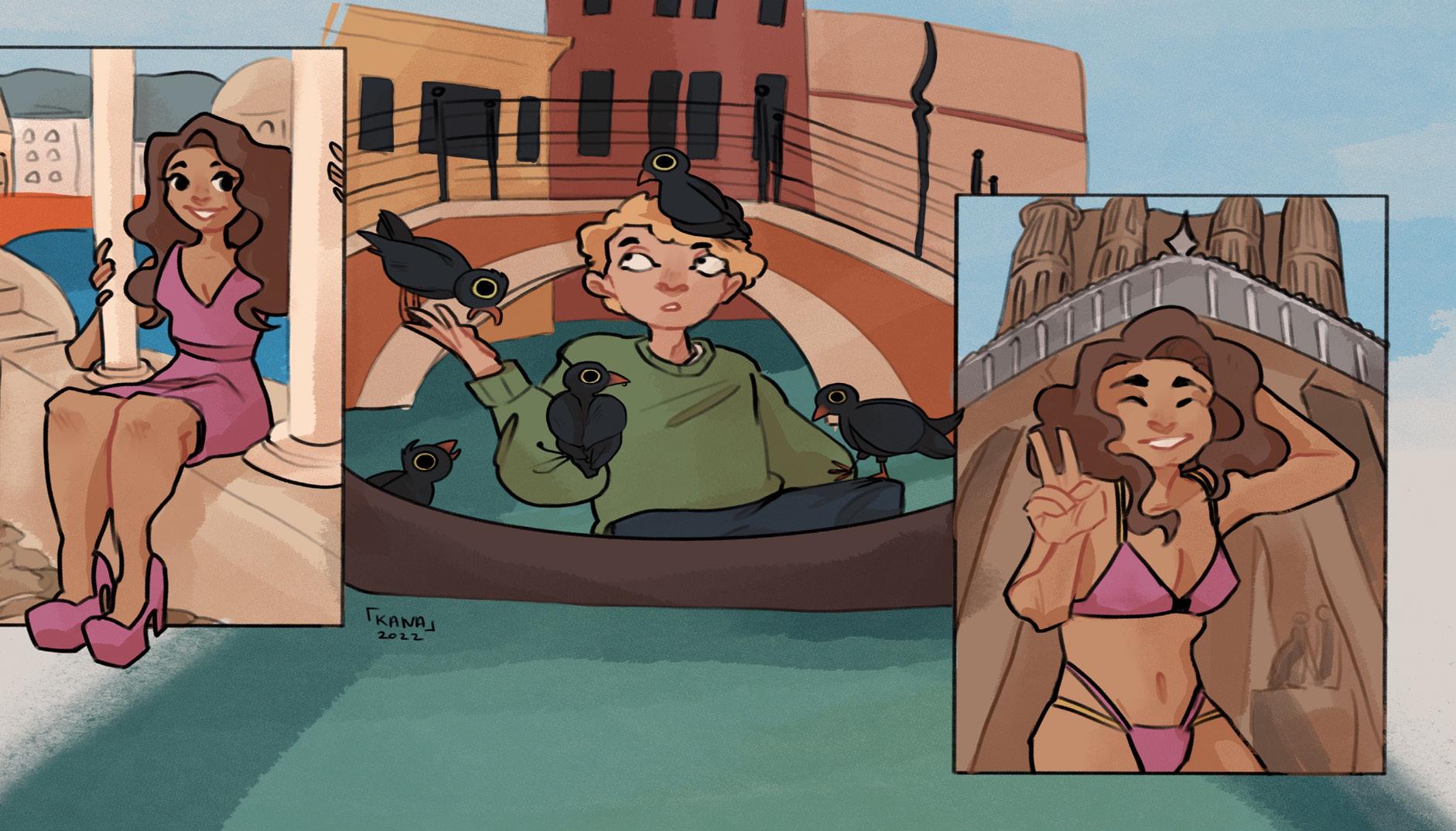
Perhapsit’s because they crowd all the famous landmarks or maybe because they supposedly walk too slowly, but tourists tend to get a bad rep. I’ve even caught myself complaining about the swarms of holidaymakers and sightseers whilst simul taneously being a tourist myself - so how is it possible to be a tourist without being a tourist? It’s a little more nuanced than simply ditch ing the city guide, camera and the bum-bag (in my opinion these all remain pretty useful). When travelling across Europe this summer, I was lucky enough to stay with family and local friends, which gave me an insight into how it’s possible to really get to know and appreciate a place without feeling like any other tourist.
Probably the simplest and best way to be a respectful traveller is to educate yourself on your destination before you get there. After all, it’s being ignorant to local laws and customs that screams ‘tourist’! A quick read under the ‘local laws and customs’ section on the FCDO country pages can inform you of the practices you need to follow to stay out of trouble and it’s where you’ll also find guidance about lo cal dress. For example, did you know that you aren’t allowed to wear high heels at ancient sites in Greece, you shouldn’t feed pigeons in Venice and you can’t walk around in your bath ing suit in Barcelona?
If you find a way to do this before you trav el then even better, otherwise try and make it your priority when you arrive. Now, I don’t mean to grab the first German person you see when you touch down in Berlin, but if you get talking to a barista or shopkeeper, then pick their brains on what they love most about their hometown! When I was re cently in Portugal, the owner of a bookshop in Porto shared with me some of his favourite walks and art galleries across the city, mean an ice cream vendor in Coim bra informed me of a local jazz festival that was taking place just outside his shop that week.

Slow travel doesn’t have to mean booking a one-way ticket go. It can just mean that instead of trying to cover a whole country in a week, you stick to one location and get to know it well. Any trip that isn’t a whistlestop tour of the main tourist attractions will lead you to connecting a bit more authentically with the places, people and culture around you. Slow travel is also a more responsible and sustainable approach to tourism - so you don’t have to feel so guilty about your fooprint. One way to get into slow travel is to use local public transport and support family-run and small businesses; sometimes an ordinary bus ride can give you a tour equivalent to any city bus tour for a fraction of the price.
It might not be the worst crime, but if you’re in the the north of Spain and ask for a Paella you may get a funny look. It’s just not exactly their local speciality and you’re way better off asking for their pulpo a la Gallega - a traditional octo pus dish. Clueing yourself up on local food customs shouldn’t just save you some em barrassment but you’ll get a lot more out of your meals as you’re bound to sample the best local cuisine. Knowing not only what tastes best but WHERE it tastes best, is also a sustainable move to make as the produce is likely to be locally sourced and may be in some cases home grown! For example, a classic Caprese salad has surely got to taste best in its birthplace: Capri. Just make sure you don’t eat it using any plastic utensils. If you’re caught using single-use plastic items in Capri, you could be fined up to €500 euros! Now that’d be one expensive salad.


Of course you can’t learn it all, but a little can go a long way! I recommend search ing some basic travel phrases for the main language spoken in the country you’re visiting. One of the best ways to do this is search for video tutorials so you can hear the words being spoken. Or save a few vocabulary flashcards to your phone so you can read through them offline and refer to them throughout the trip. You might get replied to in English, but don’t let this dishearten you. More than anything, it just comes across as polite and shows that you have a genuine interest in getting to know the people around you.
If you follow my five-step plan, then I promise that you should at least start to feel a little less like a tourist and you’ll get more out of your trips. In the meantime, I wish you safe and happy travels off the beaten track and away from the crowds!
Francesca Fantoni shares her five-step plan to blend in like a local whilst on holiday
Educate yourself on your destination be fore you get there
Onlya ten-minute journey by train from Durham, Newcastle offers a plethora of gallery destinations, right on our NorthEastern doorstep. Although Durham has a profound lack of gallery spaces, including the absence of a designated space to display Durham University’s growing art collection, Newcastle’s range of artistic institutions provides more options than you could imagine.
I hope to introduce you to a selection of Newcastle’s galleries, from the more well known, established collections, to the much smaller, unsung institutions. The first two galleries fall under the former, and the last three, the latter. However, all these galleries are of merit and worth visiting, so don’t just go to the larger ones!

Founded by Newcastle-based wine and spirit merchant Alexander G. Laing in 1901, the Laing Art Gallery is a treasure trove, containing and housing an extensive collection of a complete mixture of both nationally and internationally renowned artworks, artefacts, objects and sculptures. The Laing collection is renowned for its British oil paintings, watercolours, ceramics, silver, and glassware.
The gallery’s exhibition programme has a regular turnover and encompasses historic, modern, and contemporary art. Currently on show is a community-based project entitled ‘These are Our Treasures’ by Ruth Ewan, and an exhibit showcasing the historic Lindisfarne Gospels.
Opening times: Daily from 10am-7:30pm Laing Art Gallery, New Bridge St, Newcastle upon Tyne, NE1 8AG
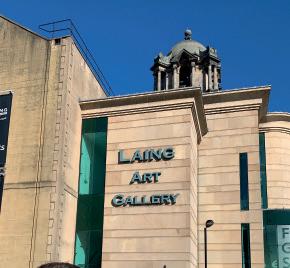
Located in Gateshead, Baltic is a converted mill and has an enormous exhibition space which is wholly dedicated to showcasing art of both today and tomorrow. After the opening of their doors they have arguably dominated the contemporary art scene within Gateshead and have put on well over 250 exhibitions so far.
Baltic don’t have a permanent collection, but do have a stellar programme of exhibitions. Currently, the exhibitions on show are called Land of Friends by Colombian artist Carolina Cayendo and Mythma chine, an “immersive visual playground” by Sahej Rahal.
Opening times: Wednesday-Sunday from 10am-6pm
Baltic Centre for Contemporary Art, S Shore Rd, Gateshead, NE8 3BA
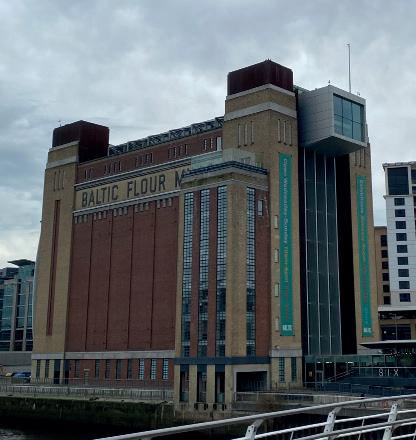
Vane is both a public gallery and a workspace for artists from all over the world, with a focus on artists from the local area. Set up in 1997, the concept of the start-up was to nurture up-and-coming artists, not only by providing them with studio spaces, but also providing a platform through which they can exhibit their work and grow within their artistic careers. The exhibition on at the moment at Vane is a contemporary exhibition inspired by space exploration, entitled ‘The Human Spaceship – Upon the Moon’ by Sunderland-based artist Helen Schell. Vane only has one artists’ work on display at any one time and the exhibi tion turnover is very high so if you like the sound of this, then visit soon!
Opening times: Wednesday-Saturday from 12-5pm Vane, 65 High Street, Gateshead, NE8 2AP
Opened in 1971, Side Gallery is a documentary photography gallery hidden away, tucked up off a pedestrian lane from a main road. With the number of contemporary art galleries in Newcastle, Side Gallery is a refreshing break from painting and sculpture, instead being wholly focused on documentary photography regarding various subject matters.
Their current exhibition is entitled ‘Classic Street Style’ and is a combined effort of three photographers, incorporating photographs from New York, Paris, and Newcastle, vividly capturing life across different cities. When I visited Side Gallery recently, I saw an exhibition called ‘Eruptions’, by Indian activist and photographer, Poulomi Basu. Their programme of exhibitions is varied and eclectic, definitely worth checking out!
Opening times: Thursday/Friday 11-5 and Saturday/Sunday 12-5pm 5-9 Side, Newcastle Upon Tyne, NE1 3JE
Like Vane, The NewBridge Project is an artist-led gallery and studio space that supports artists, curators, and local communities. They do this through the use of a multifunctional space for creative practice, providing curatorial opportunities, and pioneering an ambitious artist-led programme of exhibitions, commissions, and events.
The exhibition on currently at The NewBridge Project is a collaborative effort between a dozen artists entitled ‘Habit, Ability!’. Within this joint artistic endeavour, the concept of inhabiting a damaged planet is considered, as is the relationship between the arts sector and its various consequential environmental impacts.
Opening times: Wednesday-Friday from 12-5pm The NewBridge Project, 4 Clarence Walk, Newcastle upon Tyne, NE2 1AL
With thanks to Alix Collingwood-Swinburn, Curator (Contemporary Art)
(Laing) and
(Baltic,
visual.arts@palatinate.org.uk
WithHalloween only days away, what better time to reflect upon art’s purpose and relationship with the hideous and grotesque. What is the purpose behind art which depicts the grotesque, or the morbid? Is there some thing beautiful in its existence? Just because something looks aesthetic, does that mean it cannot also be horrifying?
to, to avoid death. What makes this piece all the more horrific, is the multiple narratives being told through one painting. The longer one looks at the artwork, the more horrific it becomes, where a new scene of horror is to be discovered with each viewing. However, the one thing every narrative has in common is that death comes out on top.
The scale and magnitude of horror in Pieter Bruegel the Elder’s ‘The Triumph of Death’ (1562) derives from the painting’s display of an tagonism between life and death, in the midst of a pandemic, where death is the ultimate conqueror over life. Where the vibrant block colours of the townspeople’s clothing con note vitality, and exuberance, the juxtaposition between this and the blurred, indistinct por trayal of the undead foregrounds that the fear of death indeed stemmed from its uncertainty and inescapability. The group of townspeople to the far left of the painting, portrayed hiding under the carriage of skulls led by a skeletal horse and horseman, are visually hiding from death. They shadow the movements of the car riage, hoping to go undeteced by the skeleton and its lantern, which can be assumed to be a metaphor for the idea of ‘seeing the light’. From this narrative alone, Bruegel underpins the desperate lengths people are willing to go
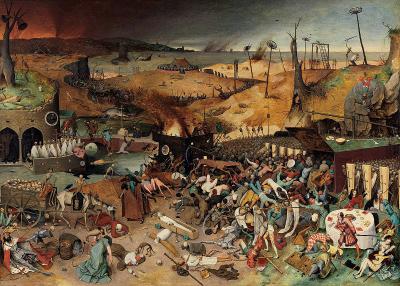
What looks to be the monarch (bottom left) laying in the arms of the undead, with sceptre in hand, foregrounds humanity’s powerlessness, where even figures of ecclesiastical authority are at the mercy of death. What is even more interesting is the fact the monarch’s posture is mirrored in the bottom right-hand corner by the portrayal of two lovers, seemingly oblivious to their violent fate as they gaze only into each other’s eyes, whilst lying in the only part of the land untouched, almost as if they are part of a different timeline. Bruegel makes the horror of war all the more brutal through providing a vivid contrast between past (the lovers) and present (the monarch and skeleton). The lovers are symbolic of romantic memories of the past, before death was in sight, hence why they only gaze at each other. The monarch and skeleton are then symbolic of a present where meeting death is unavoidable and impendig. Overall, the horror in Bruegel derives from our surface layer reading of the painting
William-Adolphe Bouguereau’s ‘Dante and Virgil in Hell’ (1850), on the other hand, contrasts with Bruegel’s by providing a vividly grotesque snapshot of a single scene rather than a variation of miniature scenes, as is the case with Bruegel. Depicting a scene from Dante’s ‘Divine Comedy’ where Virgil and Dante (stand ing left of the painting) are within the eighth circle of hell; the circle dedicated to those who are guilty of fraud. Although Bouguereau is very clearly painting a scene of horror, of two eternally damned souls in conflict, there is some thing angelic in way they move. A vicious act like biting one’s neck is transformed into balletic cho
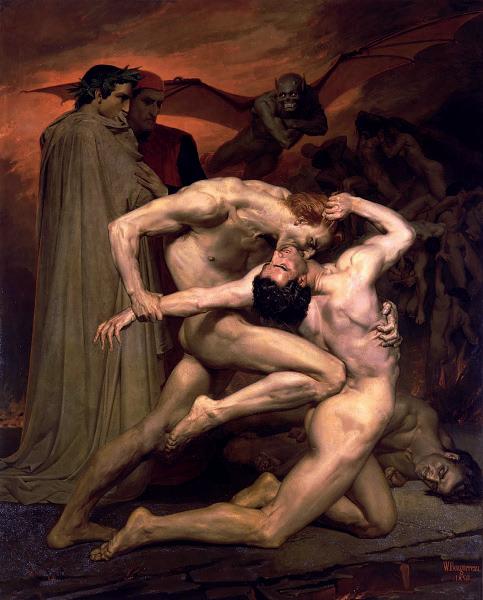
reography. The physicality of the figure on the right is exquisitely elegant with the relaxation of muscles, almost suggesting he allows him self to be taken by the dominant figure. Their rhythmic physicality compliments one another in such a controlled manner, similar to putting on a performance.
Though it is expected that the horror should derive from visual spectacle, Bouguereau seems to be suggesting that horror is born out of voyeurism. As Virgil and Dante stand and fixatedly watch the struggle between the two men, we as the observer participate in being captivated by the brawl also. The beautifying of such violent behaviour and our attraction to it is precisely what is horrifying.
Overall, whilst for Bruegel, the horror stands out through the graphic visual spectacle on its own, for Bouguereau’s painting, it is not the painitng itself which is horrifying, but why we were drawn to it to begin with; the idea that humanity takes glory in watching another’s struggle. In Bruegel, horror can be extracted from a surface layer observation of its graphic portrayal of violence; however, in Bouguereau’s work, the horror emenates from its beauty.
The longer one looks at the art work the more horrific it be comes
BishopAuckland has long been an influential part of County Durham, serving as both the residence of the Bishop of Durham and, later, a pros perous mining town. However, over the last decade, the town has also become home to the Auckland Project, a charitable organisa tion hoping to regenerate the area by estab lishing it as a tourist destination.To better un derstand the project’s work and its impact on the local community, I contacted Catherine Hodgson, the charity’s Head of Marketing & Communications.
Speaking on behalf of the project, Cath erine described the organisation as a “unique collection of heritage attractions, galleries, gardens and parkland in Bishop Auckland, at the heart of County Durham.” She explained that the project is the culmination of a dec ade-long regeneration programme that con sisted of the development and improvement of several different attractions. This notably included the restoration of Auckland Castle, as well as the addition of The Spanish Gal lery and The Mining Art Gallery. Though, Catherine also highlighted that the Auckland Project now additionally offers its visitors the opportunity to travel along its heritage railway and sample local produce in its two restau rants, El Castillo Tapas Restaurant and the Bishop’s Kitchen.
collection of attractions as well as through community engagement projects... Auckland Castle and the Mining Art Gallery, in particular, bring the story of Bishop Auckland to life.”
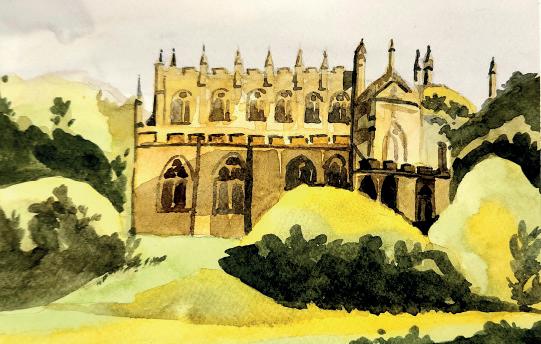
One example of community engagement that Catherine was keen to highlight was the Bishop Big Dig, describing it as “an ambitious archaeological project exploring the history of Bishop Auckland.” These excavations, run in conjunction with Durham University, aimed to map the archaeology of the local area and provide links between the community and their heritage. This project saw volunteers and students from King James I Academy gaining hands-on experience in excavation by “digging hundreds of test pits in gardens across Bishop Auckland”.
However, Catherine was also keen to mention the project’s broader impacts on the community and environment. She explained, “our work at The Auckland Project is supported by four pillars: people, community, the built environment, and the natural environment. We are part of a move ment of people working to generate positive change and make a real difference.”
Catherine noted that some of the project’s key achievements have included creating five lo cal support networks, ten community engagement groups, and 132 new jobs. Furthermore, she explained that the charity is also responsible for supporting 30 small businesses and providing weekly support to 1,200 people through its Community Food Project.
However, Catherine stressed that the at tractions at Bishop Auckland are not simply tourist destinations but also serve a critical broader purpose: “the Auckland Project is a regeneration charity with a difference. We as pire to change lives in Bishop Auckland by putting people at the heart of everything we do. Our visitor attractions exist to ensure that future generations inherit a prosperous town, filled with hope and rich in opportunities.”
Following this, Catherine further discussed the Auckland Project’s role in the community and the access to local history and culture that it provides. She stated, “We are always looking for ways to encourage the local community to engage with their history through our unique
During our conversation, Catherine also mentioned that preserving the natural environment of Bishop Auckland is also an essential part of the project’s work. She shared that the charity has been involved in protecting 150 acres of historic parkland and has planted 12,000 trees and indigenous hedgerows in the local area. She also stated that in the future, the Auckland Project hopes to further increase its positive environmental impact by planting an additional 15,000 trees and creating “10 acres of new gardens by 2024.”
Though, Catherine went on to explain that these are not the project’s only plans for the future, as they are “constantly developing new things to see and do.” In addition, she said, “[the project will] open the first museum in England dedicated to the ideas, implications and impact of faith.” This new museum, supported by The National Lottery Heritage Fund and the Jerusalem Trust, will house ten new galleries and be accompanied by a new Faith Garden.
Finally, I asked why people should be interested in visiting Bishop Auckland or volunteering with the project. In response, Catherine explained that “by volunteering with The Auckland Pro ject, you will join a collective of people, funders, partners and community groups, all working for a shared purpose – to make Bishop Auckland an even better place to live, work and visit.” Fur thermore, Catherine states that “those who visit The Auckland Project to discover its rich history and heritage are also part of this story. By visiting our attractions or spending money in our shops or eateries, our visitors help us to create a bright future for Bishop Auckland.”
We aspire to change lives in Bishop Auckland by putting people at the heart of every thing we do
Evenwithout a nationwide cost of liv ing crisis, university life doesn’t come cheap. Coupled with rising gas and electricity prices, higher food costs, and inflation making everything more expen sive, students are really feeling the impact on their finances right now. Yet, figuring out how to afford next month’s rent or having to turn down plans with friends shouldn’t be an ele ment of student life. As a third-year student, here are my experiences of living with high prices and the practical steps I take to mini mise costs where possible. At a time when student support from the government and is insufficient, I hope my advice can be of help!
My housemates and I have all found our selves being much more careful with our gas and electricity usage this year. The most important thing is to establish between your housemates that it needs to be a joint effort to minimise usage where possible. Thankful ly, all of my housemates are on the same page about this, but I don’t doubt the cost of liv ing crisis has made necessary some awkward conversations about finances between some housemates. When these conversations do arise, be transparent about how much money you’d want to spend on bills, and if you’re the housemate with a larger budget, be willing to compromise out of respect for your friends.
Some realistic tips for reducing gas and electricity usage:
a. Beanie bags use less electricity to heat than hot water bottles, as the microwave uses less electricity than the kettle.
b. When cooking, batch cook meals and store them in the freezer – not only does this save you time and guarantees that you eat well, but it also means you don’t need to turn the hob or oven on as much to cook meals from scratch every time. It also saves money by not having to buy lunch when you’re out or at campus, if you have leftovers for lunch stored in Tupperware.
c. Fully charge your laptop and phone when you’re at the library.
d. Switch the TV off if nobody is watching it.
e. If bills are included in the cost of your house, make sure you’re wary of the Fair Usage
policy of your contract – you could have a nasty surprise at the end of the year if you go over it.
I don’t want to state the obvious, because articles such as ‘ways to keep warm without turning the central heating on’ are insulting to people who know the winter season is going to be a struggle despite the number of layers you wear.
shots.
c.Cooplands is cheaper than Greggs for food on the go.
d. Utilise shops such as Savers and Pound land for much cheaper toilet roll, snacks, clean ing products, toiletries etc. (Side note-Savers has cheap alcohol!)
e. Use your Tesco Clubcard, and scan it eve ry time you shop to accumulate points vouchers. Get a mobile nectar card if you frequently shop at Sainsbury’s.
f. Get a Boots advantage card – you get 10% off all purchases when you show your student card, as well as accumulat ing points and receiving coupons.
g. Kingsgate Bar and Café in the SU offer a coffee and donut deal for £3.50 –much cheaper than the likes of Costa and Starbucks, with a good working atmos phere.
h. Drinks at Osborne’s, Jimmy’s, Klute and Fabio’s are quite cheap.
The university has also implemented some measures to help struggling stu dents, but these aren’t enough on their own. The Durham housing crisis for next year is only exacerbated by rising infla tion, and needs to be addressed by the university.
Regardless, there’s nothing we can do right now other than alter our lifestyle. That said, my friends and I remain determined enjoy our fi nal year at uni, whilst being more budget con scious.
Here are my recommendations for cheap places to eat, drink and go out, as well as some amazing discounts you can get:
a. Refillable hot drinks at Wetherspoons for £1.25 – a good place to work if you fancy being in a warm, relaxed environment for as long as you want.
b.The City Bar does great student deals – two cocktails for £8, and cheaper pints, spirits and
Nevertheless, here is what the univer sity is doing right now:
a. Breakfast club is being offered at the SU and the Library between 8-9am Mon day-Friday. You can get free cereal and hot drinks between this time.
b. The Durham Grant has been increased for eligible students.
c. Durham has partnered with the Too Good to Go App, so that students can purchase cheap, leftover foods.
The 93% Club has also released its own cost of living campaign in response to the insuffi ciency of university initiatives, which is defi nitely worth researching and supporting.
Just know you’re not alone during these tricky times, and please reach out for help if you need it. I hope these tips help you have your ideal student life in a budget-effective way!
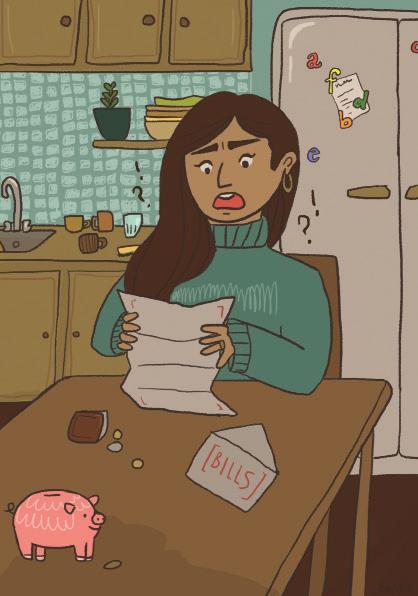
The university has also im plemented some measures to help struggling students
creative.writing@palatinate.co.uk
–
Lustrous black hair
That is shot through with filaments of brown.
It is strong and sturdy, Because my mother massaged Coconut oil into my scalp every morning When I was young.
“Don’t you ever get bored of how dull and lifeless your hair looks?”
I have –
Eyes so dark they are almost black. But in the sunlight, They turn the same shade as The chai I drank With my grandparents Every Saturday afternoon.
“Do you ever wish your eyes were like blue or something more interesting?”
I have –Skin that’s dark, darker than most. Yet fairer than some. Shades of Mocha, Bronze, and Espresso, All alone in a sea of Ivory, Porcelain and Beige. Skin that seems to stand out for all the wrong reasons.
Skin that I covered with creams and potions To rid myself Of melanin
Just so I could fit in.
“How are you so fair? I thought everyone from your country was dark.”
I have –Features that don’t really stand out. A nose that I dislike
Because it’s not upturned. Eyes that are shaped Just a little differently. Lips that seem a bit too full And cheekbones that add nothing to my face.
But my face Is the perfect blend Of my father –Who sacrificed so much to send me here
And my mother –Who works tirelessly for me to be here.
“You’re pretty for an Indian!”
I have –
To try harder to be pretty. Put more effort in To look the same level of attractive As the girls around me.
To change my appearance, my clothing, My identity.
Ruhee Parelkar
Theeyes lightyears away are watching her purchasing a matchbox from him, waiting for death.
The ears Behind bolted doors are measuring her silence – it’s a vice, her lips didn’t move for the protest
Last spring. Nobody knows her husband was killed in one; nobody cares to know that she was crippled
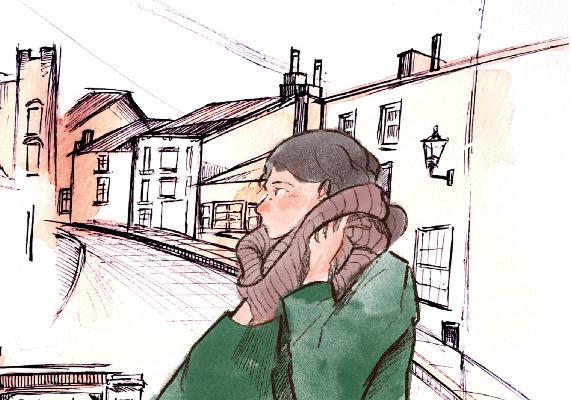
By that bullet which still remains in her left shin.
All except the mute who sold her the matchbox, and heard -
And will die tomorrow. White rains wet the matchsticks and bring out pharisees from behind curtains against
The window offering her only farthing. They make everyone forget all the light of humanity contained in a single matchstick.
Leo Li
Illustration
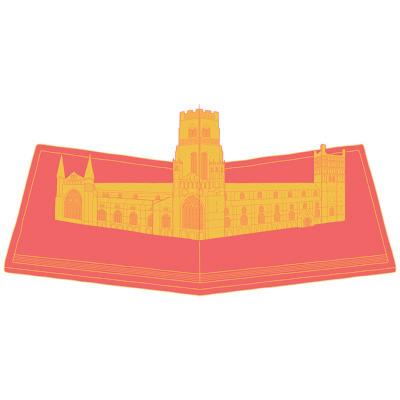
writers Ruhee Parelkar, Bea Bennett, Hannah Ferguson, Lizzie Kennedy, Holly Downes, and Dherran Titherington-Bragg speak on their impressions and favourite experiences attending some of the many diverse talks and events offered during the 2022 annual Dur ham Books Festival.
13th October 2022
Durham Book Festival kicked off with the announcement of the Gordon Burn Prize. In memory of Gordon Burn, a Northern writer who was not afraid of challenging genre, this literary prize is awarded to writers who are ambitious and experiment with the limits of fact and fiction. The event featured the five shortlisted authors – Margo Jefferson, Graeme Macrae Burnet, David Whitehouse, Preti Taneja and Lea Ypi coming together and reading out extracts from their work. A small discussion followed with conversations surrounding the fluidity of genre, structure and the complexities of human nature. The event concluded with the an nouncement of the 2022 winner – Preti Taneja for her deeply per sonal book – Aftermath
14th October 2022
Linda France’s 10th collec tion of poetry is a rousing and poetic call to arms in the face of the climate emergency. Throughout her collec tion, France, at the end of her tenure as New Look North’s Climate Writer in Residence, speaks to the immense importance of ‘tenderness’ and the ways in which we share and are united in our common home rather than exist in our own personal spheres. France’s Startling is an inspiring work, as constant in her belief in kindness but fierce throughout she strikes the perfect balance to her new collection.
14th October 2022
Dedicated, almost encyclopaedic and rather enthralling to listen to. Bob Stanley visits the Durham Book Festival to discuss his latest adventure into the history of music with, Let’s Do It: The Birth of Pop Music. From Duke Ellington to dancehalls, and the rpm record to the Ratpack, his passion and sheer knowledge exudes through in both his discussion with self-pro claimed ‘music nerds’ and writing.
15th October 2022
A moving talk about his longstanding relationship with Auden’s poetry, Jeremy Vine’s ‘How Durham made me fall in love with Auden’ explored insights into how he connected with the Durham landscape whilst at uni versity and the continued relevance of poetry in his career. Sprinkled with anecdotes from his university days, Vine’s enthusiasm shone through in his reciting of the poetry that impacted him in his youth. This made for an
engaging talk whether you were well-versed in Auden or hearing him for the first time.
15th October 2022
The talk featured popular authors – Lucy Foley and Janice Hallett who spoke a bit about their new releases and then engaged in an insightful discussion around what goes into writing a successful murder-mystery novel. They spoke about the importance of language in their works, the use of layering stories within stories as well as character traits. Audience members joined in the lively discussion, asking questions pertaining to audiobooks, the writing process as well as the authors’ inspirations.
Jason Cowley, the editor of the newspaper, New Statesman, and Alex Niven, an English Literature professor for Newcastle University, joined forces in their captivating talk on Cowley’s new book, Who are we now?
Discussing the everchanging identity of England, they mapped the events over the past twenty years that has defined ‘Englishness’, focus on how, as a country, we must create hope for younger genera tions to strive for a stable identity. This discussion delivered – it was knowledgeable, impactful, and somewhat inspiring, especially in a time when our country is in constant political turmoil.
Written with wit and a dry sense of humour, Marina Hyde’s new collec tion of her essays brings a much needed sanity to the turmoil of modern politics. Spanning the years as a writer for her weekly Guardian column, Hyde’s collection speaks to the misadventures and potholes that litter our current political landscape; by turning the inept politicians into pan tomime dames and sports stars into wailing babies, Hyde’s acerbic wit is a joy to witness. When historians look back on this mad age, I wouldn’t be surprised if this is what they turn to for some light relief and razorsharp comment.
Fiona Hill: From Durham to DC
16th October 2022
Hit by an unexpected quarantine over in Germany, Hill spoke elo quently to the audience over video call, unaware of the large bustling audience that sat before her. Her political memoir, There is Nothing for You Here, acted as a springboard for the rest of the afternoon’s discus sion, inviting thoughts on social mobility, international and local politics and her own insights on the current conflict in Ukraine. The hour was incredibly insightful, and unnervingly inspiring, both for the budding student and the more mature listener.
The talk featured popular authors
